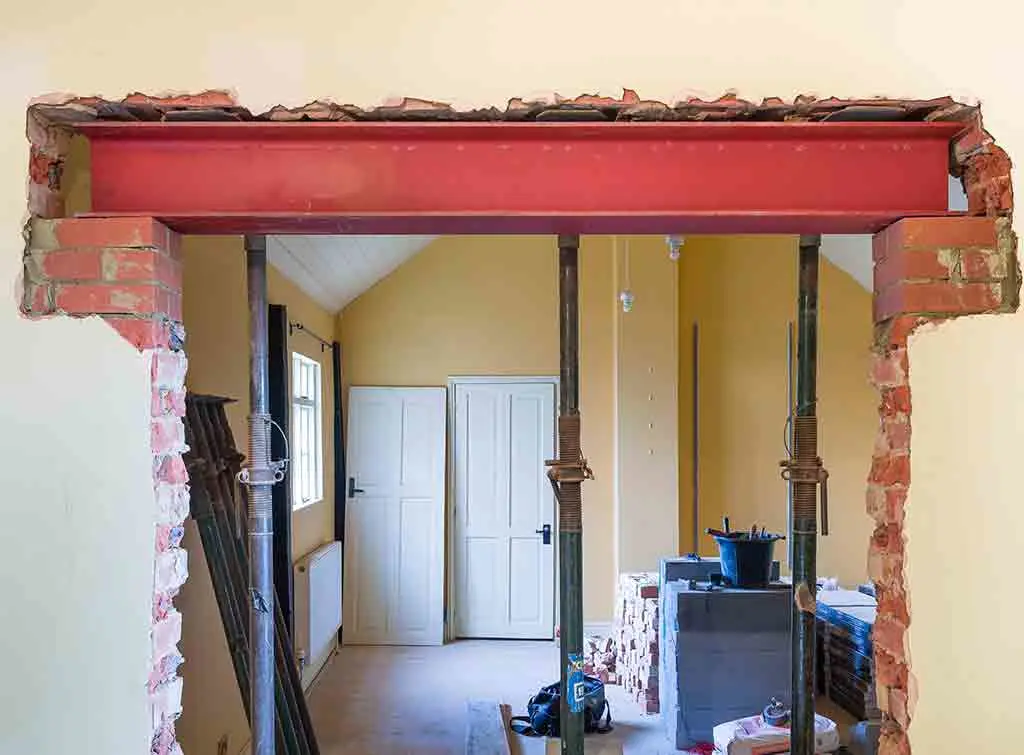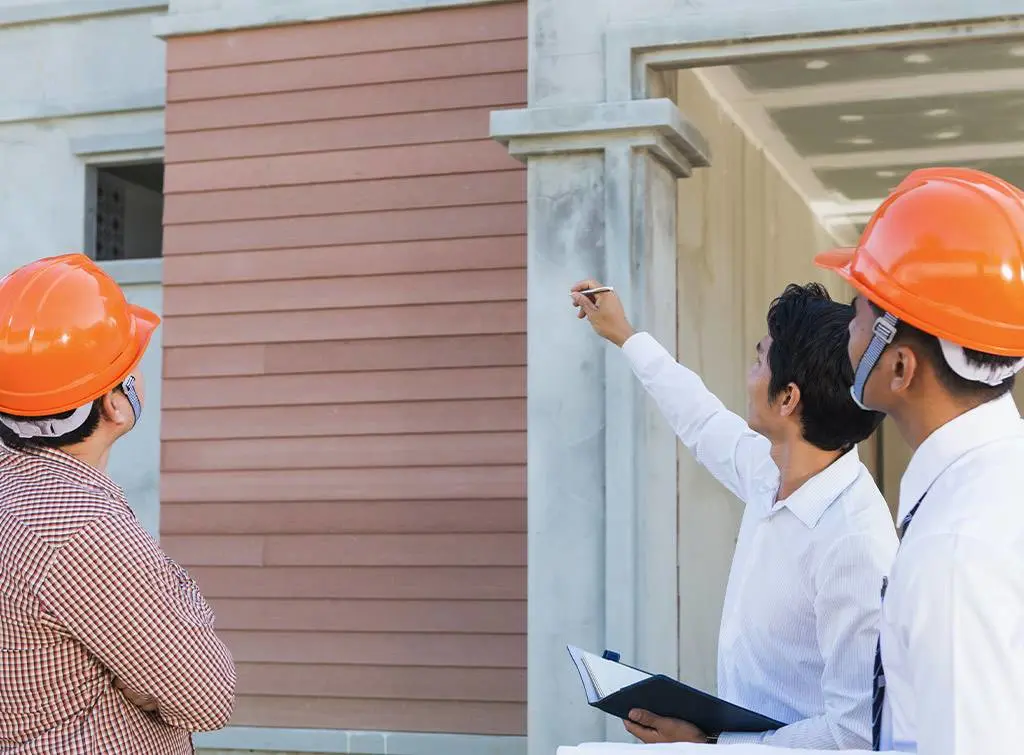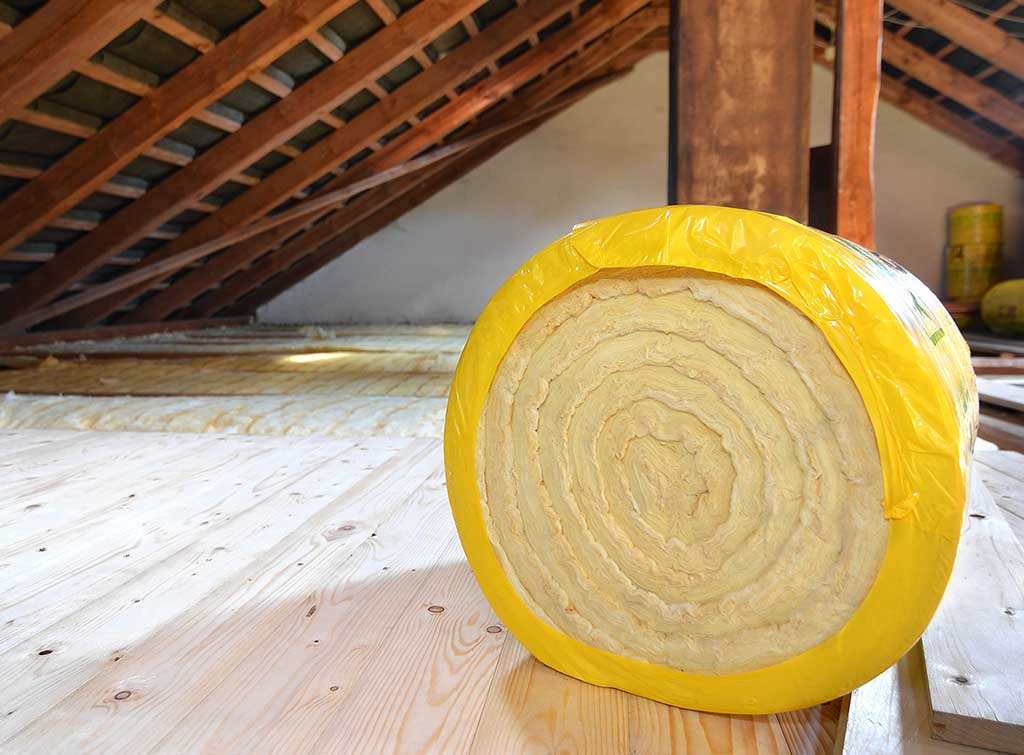Blog>Planning Guides>Planning for removing a load bearing wall
Last updated: 26 March 2024
Planning for removing a load bearing wall
While there are many jobs that can be done on a DIY basis, removing a load bearing wall on a whim is not one of them. So before you get handy with the sledgehammer, read our essential checklist to safely tackle structural wall removal.

Removing a load-bearing wall presents the opportunity to open up your home and create a layout that suits the needs of you and your family.
However, in this post, we're talking about structural wall removal. That is, walls essential to the structure of your home - the ones that stop it from falling down!
So it goes without saying, that before you launch into action with your sledgehammer, safety must be the number one priority.
Our planning guide to removing a load-bearing wall provides an essential checklist to ensure you cover all bases before starting this project.
See the tradespeople we've checked and recommend for your job
Checklist for removing a load-bearing wall
Removing a load-bearing wall is serious business, hence why there are regulations to adhere to that help to ensure the safety of you and future occupants.
Follow our three-point checklist to ensure you've made the right applications before you get started. Then, scroll down to see which professionals you need in your corner for this building project.
1. Planning permission
One of the big questions around this project is whether you need planning permission to remove load-bearing walls.
To remove one load-bearing wall, planning permission isn't usually required.
However, if you're carrying out other building work, contact your local planning authority to discuss your plans.
They will be able to let you know whether you need to apply for planning permission before you proceed.
Listed building consent
Similarly, if you wish to change the layout of a listed building, you will need to apply for listed building consent from your local planning authority before you get started.

2. Building regulations
Building regulations are different from planning permission.
Even if you don't need planning permission to remove a load-bearing wall, you will need building regulation approval.
Building regulations approval
To apply for building regulations, you have one of two options:
1. A local authority building control officer
2. A private, approved building control inspector
A private inspector will tell your local authority about your planned work. This is called the 'initial notice'.
Types of application
There are three main types of applications when it comes to building regulations:
1. Full plans
Full plans are required for more complex work. Your local authority will normally get back to you within approximately five weeks of placing your application.
As long as the finished work complies with regulations, you'll receive a completion certificate within eight weeks of completing the work.
2. Building notice
For smaller projects, including removing a load-bearing wall, you can submit a building notice to your local authority. Work can then commence two days after your submission.
Unlike full plans, you do not get formal approval.
3. Regularisation
Regularisation is retrospective approval for work you've already carried out without prior consent. This can only be sought from a local authority building control officer.
3. Party Walls Act
A party wall is a shared wall between you and a neighbour. Therefore if you live in a semi-detached or terrace property, this could apply to you.
If the load-bearing wall you intend to remove is connected to a party wall, it's a legal requirement to get permission from your neighbour before you begin work.
For example, if you want to knock through between a living room and dining room you may need to insert an RSJ (rolled steel joist) into the adjoining party wall.
Find a Party Wall Act surveyor in your area using our leading directory. Simply add your postcode below to see who comes highly-rated near you.
See the tradespeople we've checked and recommend for your job
The dream team for structural wall removal
If this is the first time you've planned for the removal of a load-bearing wall, you'd be forgiven for not knowing which tradespeople you need for the job.
Here, we outline the load-bearing wall removal specialists who will ensure your home remains structurally sound and compliant throughout the process and beyond.
1. Structural engineer
Within the context of removing a load-bearing wall, a structural engineer is responsible for advising how to safely remove the wall while maintaining the structural integrity of your property.
To do this, they calculate the RSJ needed to support the load that the structural wall would have supported.
On average, you can expect to pay around £400for a structural engineer to assist with this project.
Even if your wall is not load-bearing, it's still advisable to enlist the services of a structural engineer. Your wall could house plumbing or electrical wires that could be damaged without proper planning.

2. Builder
With the structural engineer's calculations in hand, an experienced builder will make light work of removing your load-bearing wall and inserting the necessary supports.
What to look for in a builder?
For this project, find a local builder who has experience in removing load-bearing walls and working with RSJ calculations.
For any major structural changes, you want to hire a tradesperson who is fully insured (all our members must have public liability insurance), to ensure you're protected in the event of an accident.
Lastly, take the time to check their reviews. Knocking a wall down is a messy, disruptive job. Courteous builders will ensure the household is prepared as much as possible to minimise the upheaval.
Typical building costs
An RSJ will cost in the region of £232.50 per metre
The average cost of removing a load-bearing wall is between £1,250 - £1,750
NB. Check whether your builder's quote includes waste disposal, otherwise, you may need to factor in the cost of skip hire too.
Building control inspection
Once the work is done, you will need to arrange an inspection with building control. They will sign off the installation of the beam before and after it is boxed off with fireproof plasterboard.
As long as all is well, you'll then receive a completion certificate. This will make it easier to sell your property in the future. A completion certificate costs between £250–£450.
Find an experienced builder who comes highly-rated in your area. Just add your postcode to the box below.
See the tradespeople we've checked and recommend for your job
Architect
Another query that often pops up on this topic is whether you need an architect to remove a load-bearing wall.
If this is the only work you're undertaking, a structural engineer and builder will be able to complete this project for you (as described above).
However, if this work is part of a bigger home renovation project, full architectural plans will be needed.
See the tradespeople we've checked and recommend for your job
FAQs
What happens if you remove a load-bearing wall without support?
If you remove a load-bearing wall without support, you risk compromising the structural integrity of your property, which can lead to instability, and worse case, collapse.
How much of a load-bearing wall can be removed without a beam?
Before removing a load-bearing wall, you need to install an adequate support system, such as a rolled steel joist (RSJ).
That's because a load-bearing wall supports the weight of your home's structure and framework – so you need to keep the structure fully supported.
Can you remove a load-bearing wall yourself?
Once you've submitted a building notice and received calculations from a structural engineer, you can attempt to remove a load-bearing wall yourself.
That's providing you have the tools, equipment, and knowledge to undertake this task safely. We always recommend hiring the help of an experienced tradesperson.
More Planning Guides
More Structural Engineer Articles
See the tradespeople we've checked and recommend for your job





